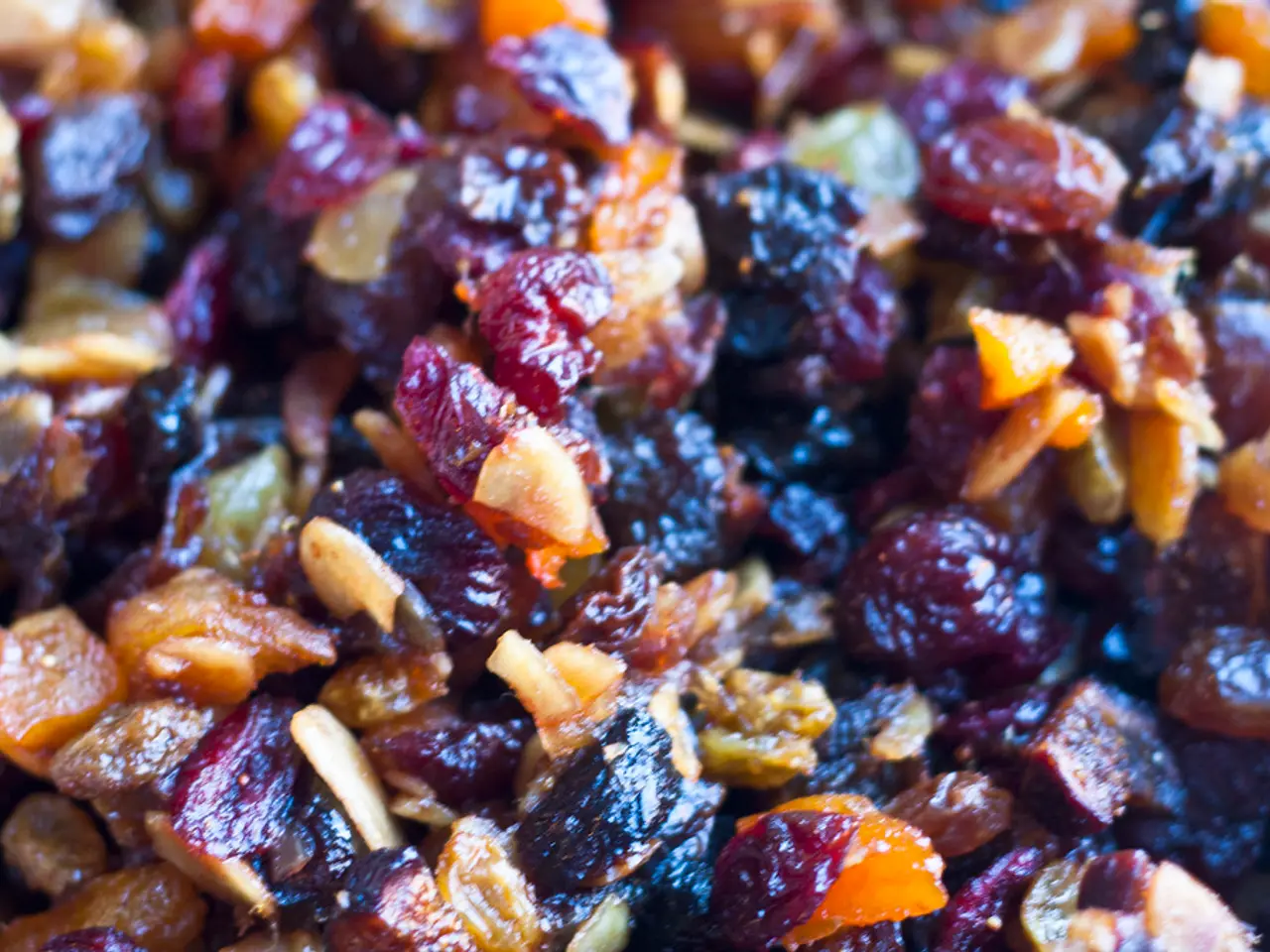Exploring the Versatility of Soybeans: Beyond Soy Sauce and Tofu
In the culinary world, soy products have long been celebrated for their versatility and rich flavours. From the classic tofu to the lesser-known yuba and okara, these ingredients offer endless possibilities for creative cooking.
Miso, a spice paste made from a mixture of soybeans and rice, fermented using a white mold, and aged for at least three months, adds complexity to various dishes such as soups, tomato sauce, stews, vegetable dishes, dressings, sauces, and even desserts.
Tofu, a staple food, offers countless possibilities when well-seasoned. Freshly made tofu tastes nuttier and creamier than store-bought. Tofu can be found in bio and Asian stores. It is versatile and can be used in many forms including silken tofu for puddings or firm tofu for stir-fries and grilling.
Yuba, also known as tofu skin, is a protein-rich product made by heating soy milk to form a skin on top, which is then dried and rolled or folded. Its delicate texture makes it ideal for incorporating into wraps, rolls, or salads.
Tempeh, a fermented soy product originating from Indonesia, is made by cooking soybeans, mixing them with a starter culture of white mold and a touch of vinegar, and fermenting the mixture for two days at 30 degrees. Tempeh has a savory flavour and can be crispy fried or deep-fried when cut into small pieces.
Natto, another fermented soy product, is made by cooking soybeans and wrapping them in rice leaves, allowing them to ferment through bacteria inside and develop a strong smell and taste, and becoming stringy. A beginner-friendly recipe mixes natto with avocado chunks, cherry tomatoes, and a dressing of olive oil, balsamic vinegar, and Dijon mustard to mellow its strong flavor and sticky texture.
Okara, the solid residues left over from filtering soy milk, can be used to give bread and baked goods a light texture, make meatballs or croquettes, enhance soups and stews, or make spreads.
Fermented soy products like tempeh and natto add umami flavor to dishes and are high in plant-based protein, healthy fats, minerals, vitamins, and isoflavones. They are not only nutritious but also versatile, finding their way into traditional dishes or adapted into contemporary recipes like tempeh stir-fries, miso soups, salad dressings, marinades, or glazes.
Creative recipes using these various soy products include flavorful bowls, dressings, fermented staples, and dairy alternatives that highlight their unique textures and tastes. These creative uses leverage the diverse flavors and textures of soy products, making them appealing even to those new to these traditional ingredients.
For instance, soy milk made from soybeans can be transformed into high-protein vegan yogurt by culturing with plant-based starters, making a creamy, tangy dairy-free yogurt. Soy-based smoothies or chilled blends with fruits illustrate the flexibility of soy products across cuisines and meal types.
Authors and travel bloggers like Claudia Zaltenbach have written books on "Tofu, Yuba, and Okara" and "Miso", while artisans like Elisabeth Fischer from the "Soya from Austria" association make fresh tofu and tempeh twice a week.
In conclusion, soy products offer a world of flavour and texture, making them an exciting addition to any kitchen. Whether you're a seasoned chef or a novice cook, there's a soy product out there waiting to be explored and enjoyed.
- In the realm of health-and-wellness, fermented soy products like tempeh and natto are recognized for their high content of plant-based protein, healthy fats, minerals, vitamins, and isoflavones.
- Global-cuisines have embraced creative cooking methods using various soy products, such as tempeh stir-fries, miso soups, and okara-based meatballs or croquettes.
- Radio shows dedicated to lifestyle and food-and-drink often feature discussions on the versatility of soy products, like miso, tofu, and yuba, in a range of dishes from traditional to contemporary.
- As part of a balanced fitness-and-exercise routine, integrating healthy-cooking practices using soy products, such as making homemade tofu or exploring global-cuisines like Japanese cooking with yuba or Indonesian cooking with tempeh, can bring excitement and nutritional benefits to a diverse diet.





